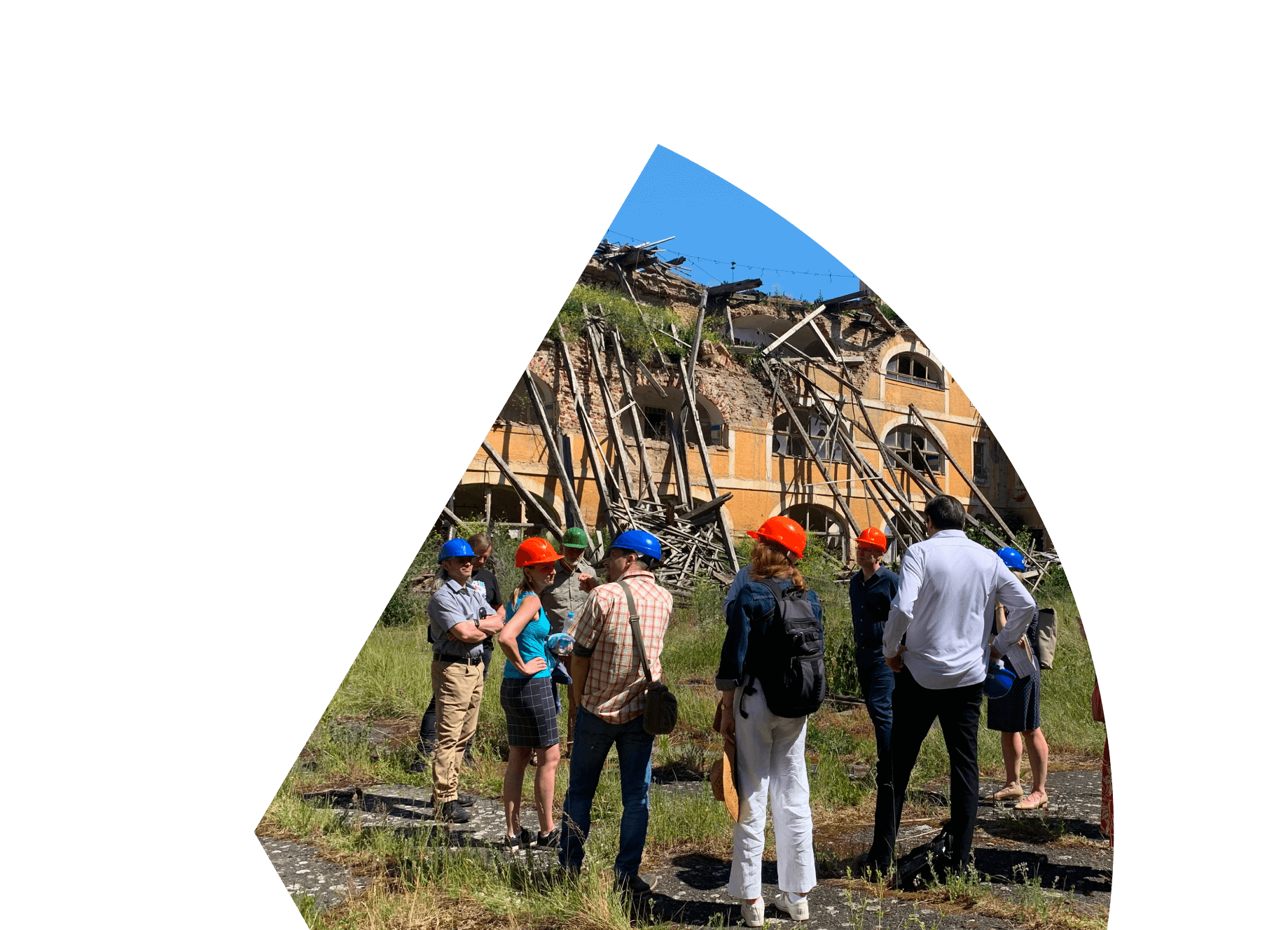Terezín

Learn about the history of Terezín and the IHRA’s involvement with safeguarding the site.
The massive Hapbsurg fortress at Terezín was built between 1780 and 1790. Never attacked, parts were used as a prison in the empire’s twilight. After Nazi Germany invaded Czechoslovakia, the Gestapo opened a prison for political dissidents in the Small Fortress in 1940. A total of about 32,000 people were imprisoned here in the war years; about 2,600 died on site, while most of the thousands deported to concentration camps like Auschwitz died there.
In November 1941, the first transport of Czech Jews arrived and were forced to prepare the “model” Theresienstadt Ghetto, designed as a propaganda tool that would hide the reality of the Holocaust from foreign observers, inside former fortress buildings. The ghetto had schools, a hospital, art and musical activity, and even football games that were immortalized on film. About 140,000 Jewish people were incarcerated at Theresienstadt between 1941 and 1945; of these, about 35,000 died on site, while just over 88,000 were deported from the ghetto to concentration camps, where the vast majority were murdered.
Catastrophic floods in 2002 and 2013 inundated historical buildings and threatened archives and artifacts, and extreme weather will only increase in future. Massive fortress buildings, including the Infantry Barracks, which have sat unused for decades, have decayed and are now at risk of collapse. Major investment in preservation is necessary, but it is equally important that these buildings are reused in a way that serves the local population’s needs while acknowledging the structures’ past as Holocaust sites of violence. Regional, national, and international cooperation and help will be crucial to realizing this goal, which may include reuse as research or education hubs. Such plans also need to be amenable to the current private owners of former Ghetto buildings.
In autumn 2022, the Czech Ministry of Local Development, Ministry of Finance, and Ministry of Culture pledged to save two fortified towns, Terezín and Josefov, from decay with necessary funding. Since that pledge was made, heavy rain had led to the further collapse of the Dresden Barracks, making the situation extremely urgent.
On a recent visit to Terezín, the IHRA Safeguarding Sites Project team noted that much of the roof has blown off the Dresden Barracks and lies in deep piles of broken wooden beams in the courtyard. Much evidence of victims of the Holocaust in the form of graffiti and personal possessions of those who were once held there has now been lost. The upper stories are no longer safe to explore and serious ceiling cracks and collapses onto the lower floor have now made the building too dangerous to enter without special permission, guidance, and hard hats.
Following the team’s visit, Chair of the Memorials and Museums Working Group Simonetta Della Seta and Safeguarding Sites IHRA Project Chair Gilly Carr expressed their support for funding to save the site from collapse.
In September 2023, the Czech government approved a €70.5m funding package to preserve sites in Terezín and Josefov, including the Dresden Barracks. The IHRA has welcomed this critical step and supports further efforts to survey all risks to the site, design mitigation plans, and stabilize the long-neglected buildings so that there is time to identify suitable and meaningful reuse for each structure.
An IHRA Grant supports the development of an exhibition in the Pinkas Synagogue to raise awareness of the Terezín family camp in Auschwitz on the 70th anniversary of its liquidation.
Three thousand seven hundred and ninety two Czech and Moravian Jews from the Terezín family camp were murdered in the gas chambers of Auschwitz- Birkenau on the night of March 8 – 9, 1944. This was the largest mass murder of Czechoslovak citizens in the Second World War.
An IHRA Grant funds a project, “Holocaust Mechanics: Deportations from the West and the Genocide of the Roma in Latvia,” that did research in numerous archives, libraries, and databases, which resulted two exhibitions: “3000 fates” on the 1942 deportation of Jews from the Terezín Ghetto to Riga; and “Roma community in Latvia. Now and then.”
An IHRA Grant enables the Czech project “Ours or Foreign? [Naši nebo Cizí] Jews in the Czech 20th Century” to add a unit to their educational and training materials on the “Familienlager Theresienstadt” in Auschwitz the so-called “family camp” in Auschwitz-Birkenau.
The unit includes 14 Czech-language testimony clips from the USC Shoah Visual History Archive. From July 2014 to July 2015, about 600 educators were introduced to the “Ours or Foreign?” program.
IHRA delegates participate in the follow-up conference to the 2009 Terezín Declaration on Holocaust Era Assets and Related Issues. Swedish IHRA Chair Ann Bernes chairs the panel on “Education, Countering Disinformation and Future Remembrance.”
IHRA Safeguarding Sites Project team visits Terezín.
Hover over the data visualization to explore.